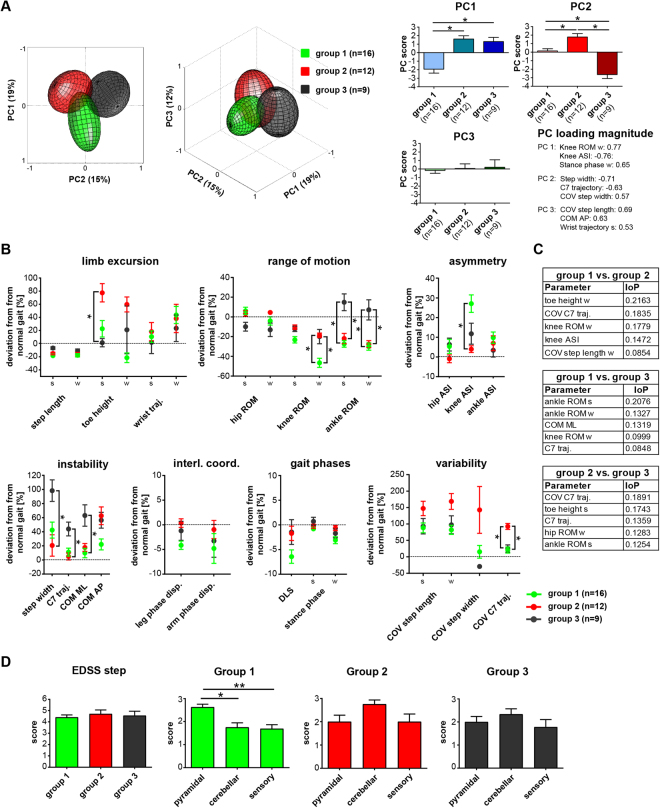Figure 4.
Kinematic gait patterns of three subgroups of patients with MS as identified by hierarchical cluster analysis. Gait parameters were assessed at patients’ half-maximal walking speed (vmax50%) (A) Principal component analysis (PCA) visualizing the locomotor pattern of the three cluster subgroups (group 1: n = 16; green; group 2: n = 12; red; group 3: n = 9; black) in the 3-dimensional PC space. Graphs on the right show mean scores on PC1–3 for all three cluster subgroups. Asterisk indicates statistically significant differences (p < 0.05) between PCs for different cluster subgroups as revealed by 1-way ANOVA repeated measures with post hoc correction for multiple testing. Variables showing the highest factor loading on PC1, PC2 and PC3 (i.e. correlation between each variable and PC space) are depicted (right low corner). (B) Gait profiles of the three cluster subgroups based on single kinematic parameters. Dots represent group mean values ± SEM for each cluster subgroup. Asterisk indicates statistically significant differences between subgroups as analysed by 1-way ANOVA repeated measures followed by post hoc correction for multiple comparisons (*p < 0.05/28 = 0.0018). (C) ReliefF feature selection algorithm was used to quantify the importance of predictors (IoP) to distinguish the different cluster groups of specific kinematic parameters (D) Expanded Disability Status Scale scores for the different cluster subgroups (group 1: green; group 2: red; group 3: black). Asterisk indicates statistically significant differences between groups as revealed by 1-way ANOVA repeated measures (*p < 0.05; **p < 0.01). Data are presented as mean ± SEM. Abbreviations: AP: anteroposterior; ASI: asymmetry index; COM: centre of mass; COV: coefficient of variation; disp.: dispersion; DLS: double-limb support; EDSS: Expanded Disability Status Scale; interl.coord.: inter-limb coordination; s: strongest leg; ML: mediolateral; w- weakest leg; PC: principal component; ROM: range of motion; SD: standard deviation; traj.: trajectory.

